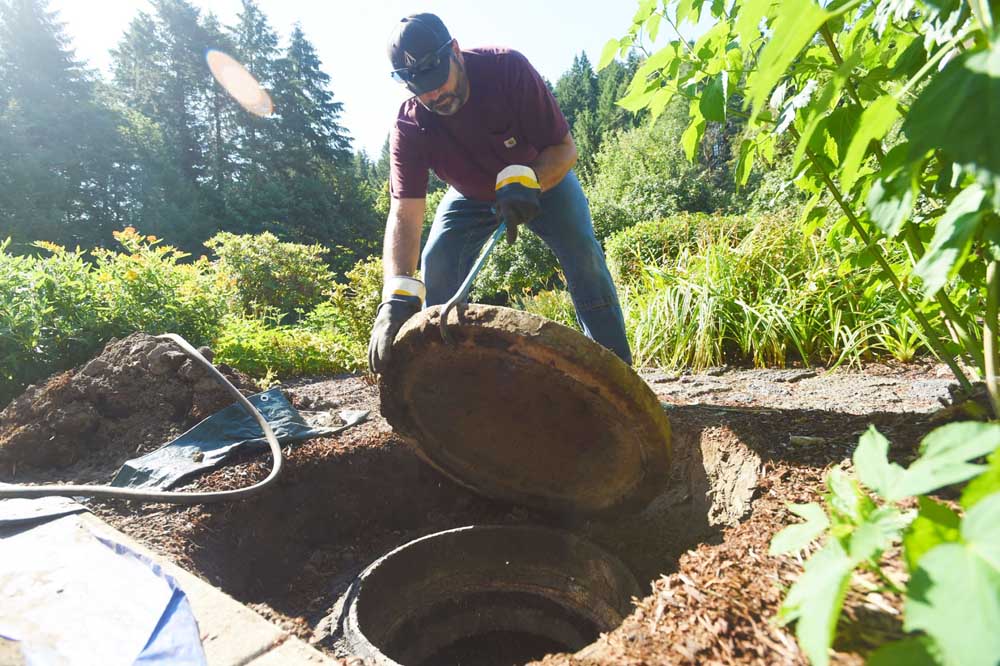COVID-19 raises questions for septic systems
Published 12:59 pm Monday, August 3, 2020

- Chris Renfrow, of Corvallis, closes a septic tank that he pumped. Renfrow has worked at American Rooter Sewer & Septic Services for 12 years and pumps five to six tanks a day.
Sanitation has become one of the best bets against contracting COVID-19. The extra emphasis on cleanliness has people turning to an old-time, steadfast solution in the face of germs — bleach.
But bleach and its fellow disinfectants like Lysol and other household cleaners — including laundry detergent containing Lysol — can harm septic systems. Those on well water with drain fields are particularly at risk of being too clean.
“The septic system works on a balance of good bacteria and bad bacteria,” said Joan Davis of Affordable Septic Systems in Lebanon. “When you use bleach and products to kill bacteria, it kills all the bacteria, and then it can’t break down the solids. So those solids go down into your drain field and the drain field fails.”
But the key might be how much cleaning solution we use.
According to Shane Sanderson, director of Linn County Environmental Health, it would be hard to impact a drain field by using household bleach.
“What you have to understand is that in a gallon of bleach, only 4 or 5% of it is chlorine,” he said. “It works to kill bacteria on a kitchen surface, but when you picture a tank literally full of bacteria, that quantity is not going to be impacted, really.” In Linn County, for instance, code requires 1,000-gallon septic tanks. That size tank, Sanderson said, would be difficult to damage.
“A slight uptick in bleach or household kill-alls isn’t going really to effect a drain field basically because of dilution,” he said. “You would have to dump a 5 gallon (jug) of bleach down your sink to see a kill in the tank.”
Other cleaning products, however, can do damage. “Bleach wipes, baby wipes,” he said, “we always want to keep those out of the system. Those will do damage.”






